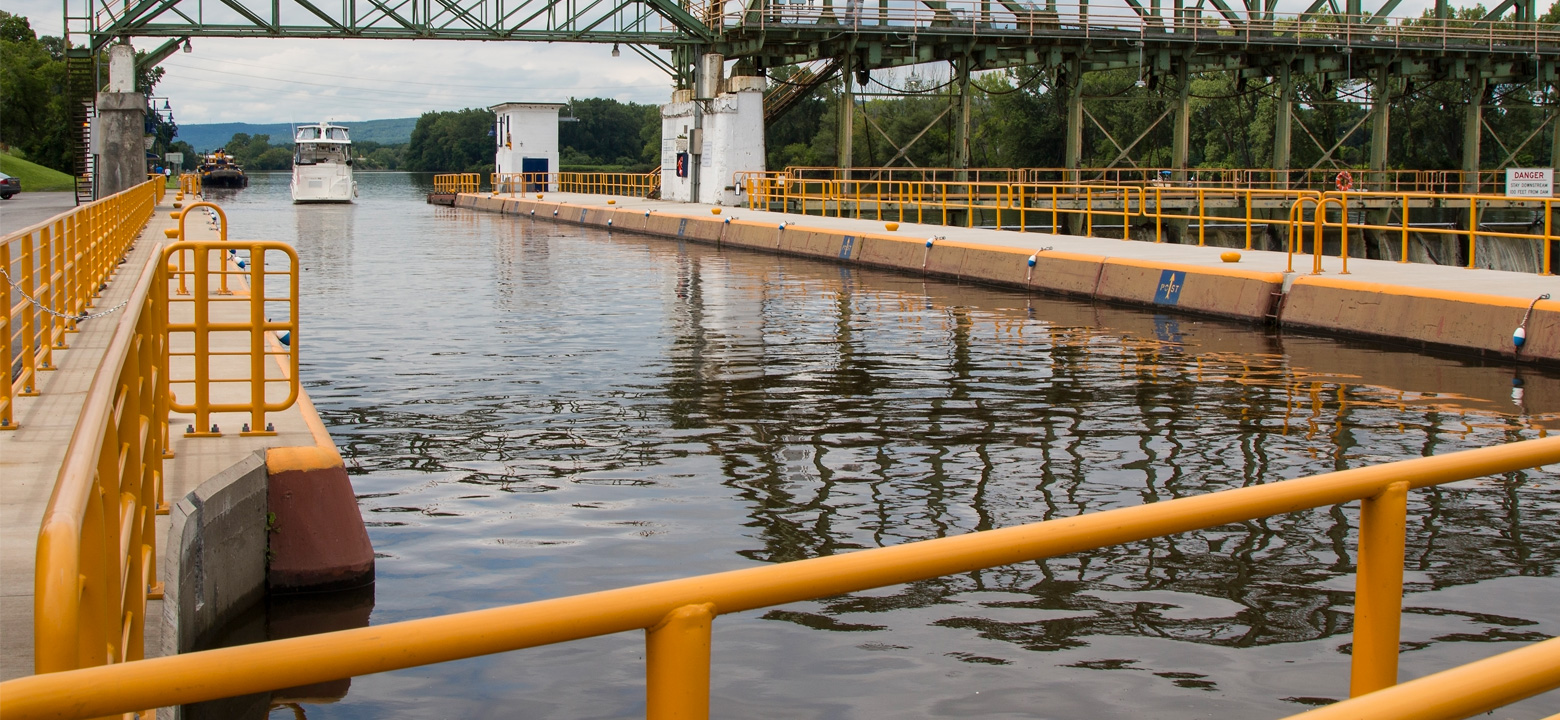
The Erie Canal is a feat of engineering. Winding for over 350 miles through mountains, swamps, and densely forested areas, it was considered so ambitious at the time that its original plans were considered sheer madness. Nonetheless, just eight years after the first picks and shovels broke ground, the canal was open for business. The most remarkable aspect of this project? It was accomplished entirely with hard labor and amateur engineering.
The whole situation began with an idea to ship goods from the Hudson River area to the Great Lakes. If these bodies of water were connected by a canal, transporting things would be faster, easier, and safer. There was only one problem: While the project certainly made sense on paper and from an economic standpoint, actually accomplishing it seemed nigh impossible. The sheer distance and unforgiving terrain meant that it would require little short of an engineering miracle to achieve. At the very least, it called for a team of highly skilled professional engineers.
Canal Commissioners made every attempt to find the best engineers around to make it a success. There was only one problem—there weren't any.
At the time, America had no professional civilian engineers, nor did it have engineering schools. When project leaders tried to hire European engineers, they wanted no part of it. The handful that were intrigued by the thought of cutting a canal through hundreds of miles of rock and forest wanted too much money.
The end result was like something out of a Disney sports movie: An unlikely bunch of amateur engineers (all self-educated), a few surveyors, a math teacher, and two lawyers who taught themselves to survey terrain by handling land disputes were going to be the ones to build the Erie Canal. One man, Canvass White, was sent to Europe to study canals and locks there. When he returned with new instruments, reams of notes and drawings, and new knowledge of locks to raise and lower boats between different elevations, he armed his comrades with the knowledge they needed to get started.
To say that constructing the canal was a learning experience is a bit of an understatement—the project was called the “Erie School of Engineers” for a reason. Not only were the workers learning as they went, but they also had to innovate on the fly.
Judge Bengamin Wright and James Geddes, self-educated surveyors, finished surveying the land in 1817. What they found wasn't entirely encouraging—the canal would have to cover a distance of 363 miles, with over a 550-foot drop in elevation. It'd take no less than 83 locks to cover the elevation change, many of them clustered around Cohoes Falls. All of this had to be done with draft animals, laborers, and hand tools.
Fortunately for the engineering team, they were armed with a unique sense of ingenuity. Along the way, they devised labor-saving ways to pull stumps, fell trees, and cut brush that saved countless hours of hard labor. With White's notes and knowledge, the ragtag team of self-taught engineers, surveyors, lawyers, and a math teacher-designed and built a series of locks, dams, and bridges that set a new standard for subsequent projects. White even developed and patented Rosendale cement, a new type of natural hydraulic cement made up of silica and dolomite. It became the dominant type of cement used in construction until the development of Portland cement in the early 20th century.
With the end in sight, the engineering team faced the biggest challenge of all: the Niagara Escarpment. With a 70-foot rise in elevation, it was far more than regular locks could handle. At a loss, the team had a competition for the best idea for surmounting the cliffs. The winner, Nathan Roberts, was a schoolteacher. His idea? A lock staircase.
This staircase consisted of five individual locks set up like a flight of steps, filled with water from Lake Erie via a massive channel blasted through solid rock. Dozens of laborers died during its construction, but the idea was successful. The Erie Canal was complete.
Construction completed in 1825, finished off by cannons set up every ten miles along the route. When they fired off a celebratory salute to commemorate the canal's opening, it took 80 minutes to finish.
With that, the Erie Canal was finished. After eight years of unprecedented hard work and innovation, New York's then-governor took a victory cruise from the Hudson to Lake Erie. Two years later, the canal had paid for itself—all of the towns along it experienced a new boom in prosperity.
In some ways, the Erie Canal's engineering team's lack of experience may have benefitted them. Without a firm knowledge of how things should be done, they were free to experiment with how they could be done. The end result was nothing short of miraculous for its time—America's first canal, built in “the least time, with the least experience, for the least money, and the greatest public benefit”. The canal is still heavily used for commercial shipping. Every year, roughly a month or so before winter, the canal is shut down for maintenance to keep this engineering marvel operational.